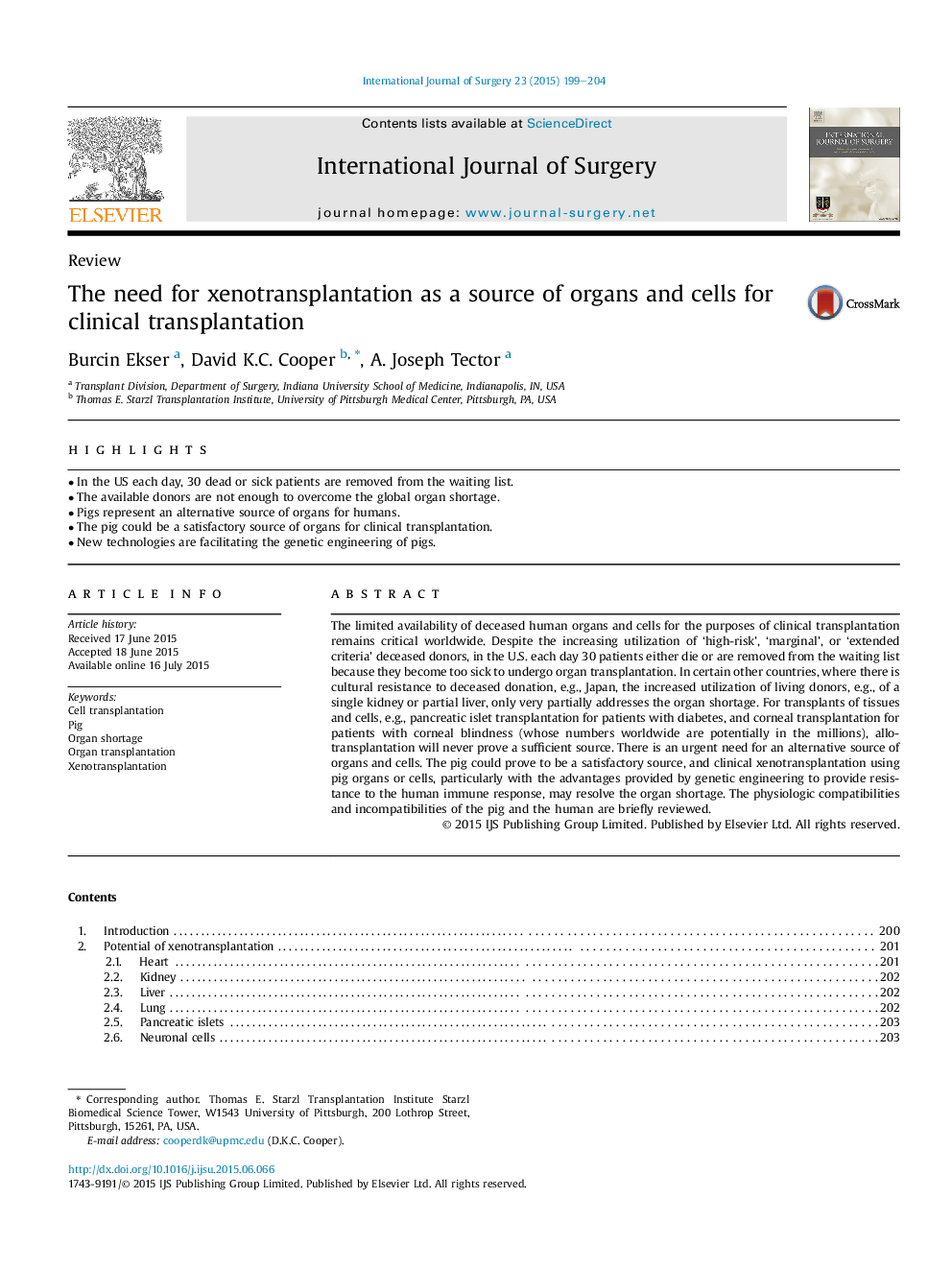| Article ID | Journal | Published Year | Pages | File Type |
|---|---|---|---|---|
| 4285713 | International Journal of Surgery | 2015 | 6 Pages |
•In the US each day, 30 dead or sick patients are removed from the waiting list.•The available donors are not enough to overcome the global organ shortage.•Pigs represent an alternative source of organs for humans.•The pig could be a satisfactory source of organs for clinical transplantation.•New technologies are facilitating the genetic engineering of pigs.
The limited availability of deceased human organs and cells for the purposes of clinical transplantation remains critical worldwide. Despite the increasing utilization of ‘high-risk’, ‘marginal’, or ‘extended criteria’ deceased donors, in the U.S. each day 30 patients either die or are removed from the waiting list because they become too sick to undergo organ transplantation. In certain other countries, where there is cultural resistance to deceased donation, e.g., Japan, the increased utilization of living donors, e.g., of a single kidney or partial liver, only very partially addresses the organ shortage. For transplants of tissues and cells, e.g., pancreatic islet transplantation for patients with diabetes, and corneal transplantation for patients with corneal blindness (whose numbers worldwide are potentially in the millions), allotransplantation will never prove a sufficient source. There is an urgent need for an alternative source of organs and cells. The pig could prove to be a satisfactory source, and clinical xenotransplantation using pig organs or cells, particularly with the advantages provided by genetic engineering to provide resistance to the human immune response, may resolve the organ shortage. The physiologic compatibilities and incompatibilities of the pig and the human are briefly reviewed.
